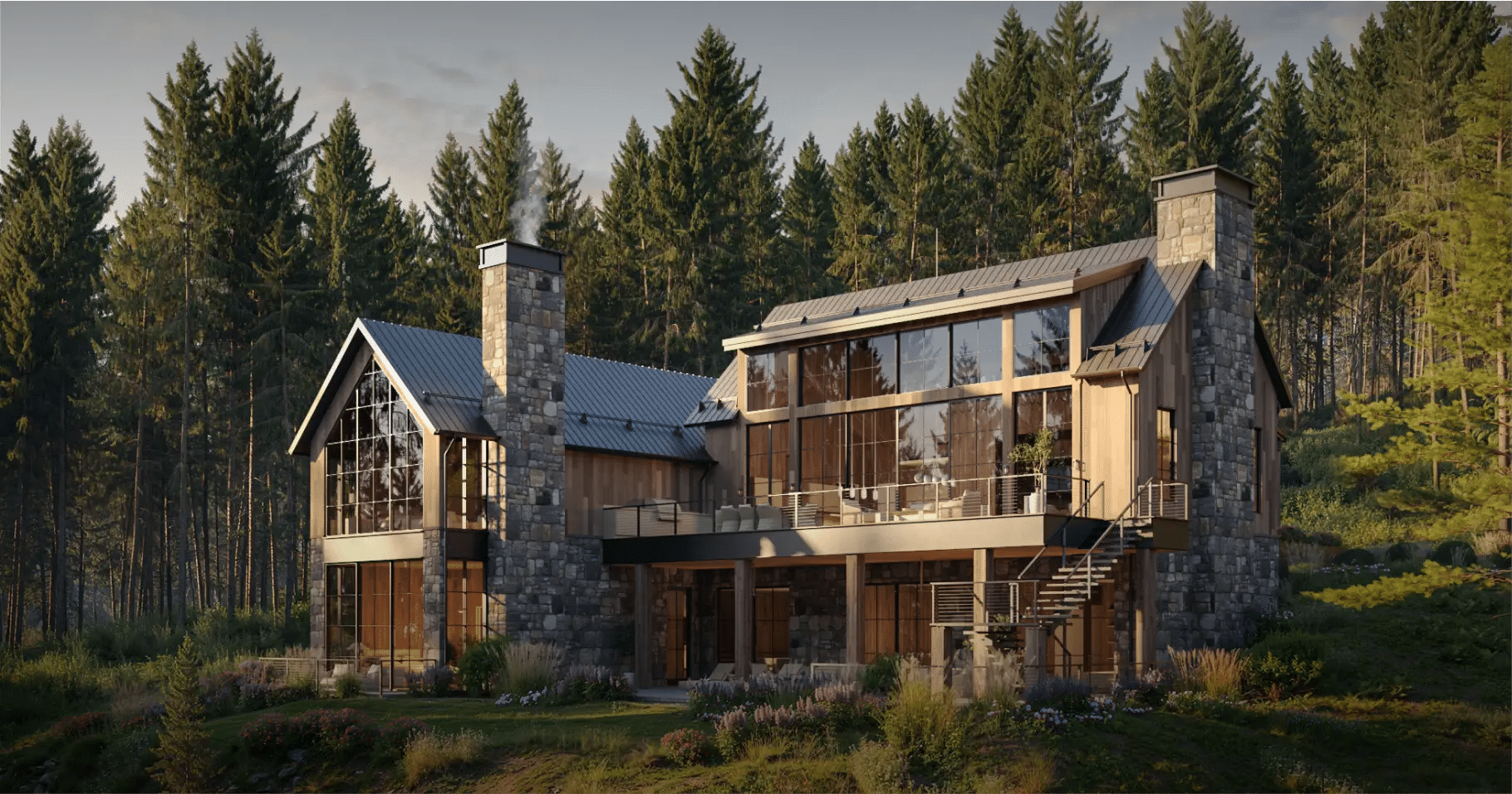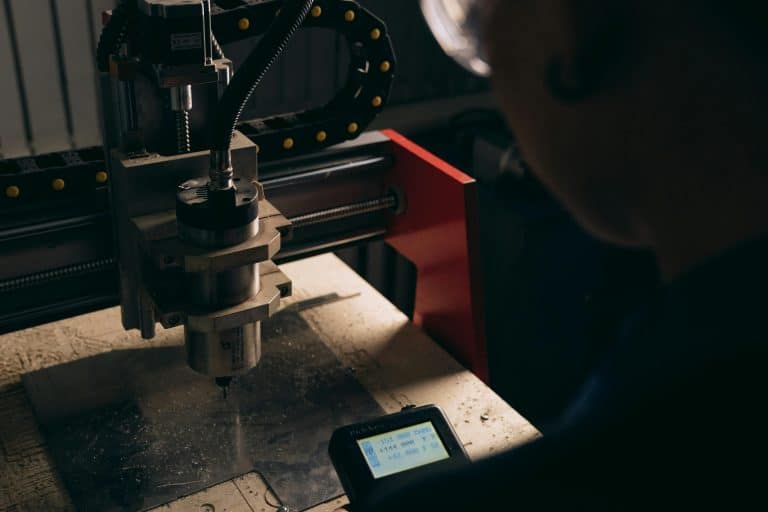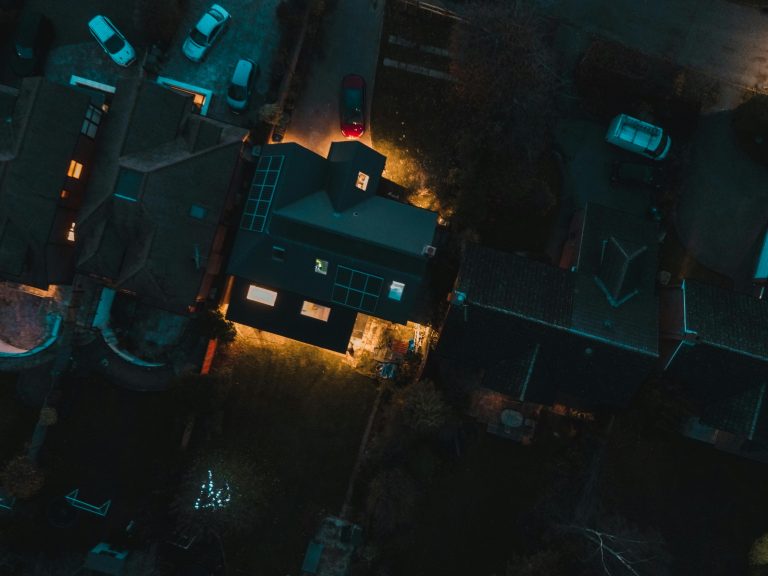Visual Storytelling Strategies Using 3D Rendering Services
Key Takeaways
- Visual storytelling in real estate taps into how our brains understand space and remember things. Just like the famous memory techniques of Simonides and Hannibal Lecter, we naturally connect with stories through the environments around us. This is why immersive property narratives are not just effective; they resonate on a neurological level, enhancing emotional engagement and helping buyers remember what they’ve seen.
- When it comes to 3D rendering services, they do so much more than just create basic visuals — they bring entire environments to life. From stunningly realistic scenes and varying weather conditions to dynamic camera flyovers and immersive walkthroughs, these services turn static architecture into vibrant, extended experiences that elevate property presentations and deepen client understanding.
- Architectural storytelling and 3D visualization go beyond mere aesthetics; they serve as powerful tools for expressing design intent, emotion, and purpose. By thoughtfully incorporating elements like color, lighting, people, and perspective, these techniques create real estate branding visuals that resonate with audiences on both intellectual and emotional levels.
Moreover, architectural visualization storytelling, along with modern storytelling techniques in architecture, empowers marketers and developers to communicate complex spatial ideas swiftly. By utilizing text-to-image generation, virtual staging, and contextual composition, they can iterate quickly and craft compelling property marketing narratives that are tailored to resonate with any audience.
What do you envision when thinking about selling real estate? What connects architecture and property marketing? It is a story about spaces and times that people tell each other. Well-known places and times that have passed but were reified in buildings, places yet to be built, and times yet to come.
How do you get into a place that is far away or doesn’t even exist? How do you take someone there? Make them wish to own it?
Fortes.vision offer 3D rendering services that create a sales pitch to communicate the idea to the end client and a shared experience to ground deeper mutual understanding.
Mind
Simonides
One of the most prominent mnemonic techniques nowadays was born out of a tragedy, as Cicero wrote in “De Oratore.” Once, a Greek polymath, Simonides of Ceos, was dining at a nobleman’s house in Thessaly, who made an improper joke. When following the poetic custom, Simonides paid homage to Dioscuri — half-twin brothers Castor and Pollux immortalized in the Constellation of Gemini — chanting a poem in honor of the noble host, Scopas — the nobleman, mocked him. “I will pay you half for this poem because the other half was dedicated to the sons of Tyndareus.”
After a while, Simonides was asked out by two young lads, which saved him from being buried with all other party members buried under a collapsed roof of the banquet hall. What a coincidence!
And it was only he who could spatially recall where each guest was seated, thus helping to identify the bodies disfigured beyond recognition. Sometimes architectural storytelling is a century-old saga or a novel, and sometimes a tragedy.
Hannibal
One of the most charismatic fictional villains, Dr. Lecter, uses the aforementioned Memory Palace Technique, or a method of loci, to a full extent:
“…Hannibal went to the center of his own mind and into the foyer of his memory palace. He elected for music in the corridors, a Bach string quartet, and passed quickly through the Hall of Mathematics, through Chemistry, to the room he’d adopted recently from the Carnavalet Museum and renamed the Hall of the Cranium. (Hannibal Rising)
3D visualization
Animals have sophisticated methods of communicating locations to conspecifics. Think of a bee dance telling where the flowers are, wolves howling over kilometers to other packs, where the deer go, or apes yelling about where the snake is.
Let yourself contemplate for a moment how far we have gone in representing reality in abstractions. You can envision a three-dimensional object from a two-dimensional black-and-white hand sketch, seeing the perspective where there isn’t one. A two-dimensional building plan helps you understand where the classroom, the fire exit, and the WC are.
In “Experience Architecture,” Steer Eiler Rasmussen says that we do not perceive everything as mass or void but as color planes.
“Very distant objects often seem completely flat. Many cloud formations are seen only as two-dimensional figures against the background of the sky. A distant stretch of coast coming into view across the water appears merely as a silhouette. You see the outlines but have no impression of depth.”
Photography lets us capture the moment, but 3D rendering services allow us to recreate or create it from scratch. The technology has evolved from drawings to computer models to photorealistic visualizations, real-time renderings, and VR environments.
Immersive experiences are achieved through:
- Close-up of small details
- Weather conditions, elements, seasons
- People in context
- Organic decoration
First comes the idea articulated in words, then it’s turned into an image, and it gains depth by adding a third dimension. And then you add the fourth dimension, time. A bird-eye view camera flyover of the exterior, a POV interior walkthrough, and a virtual environment to wander like a computer game.
Brain
Our brain is well-equipped to navigate the livable surface of our planet. Human survival has depended on recognizing and remembering spatial details within a content-rich, three-dimensional environment for millions of years. We locate ourselves in the world and social order and can inhabit imaginative, boundless spaces behind our eyelids. It is no wonder we can use 3D visualization to exploit our evolutionary gift of imagination to reach beyond its limits.
We can confidently assume that our cognition is spatial on the most abstract metaphorical and neurophysiological levels.
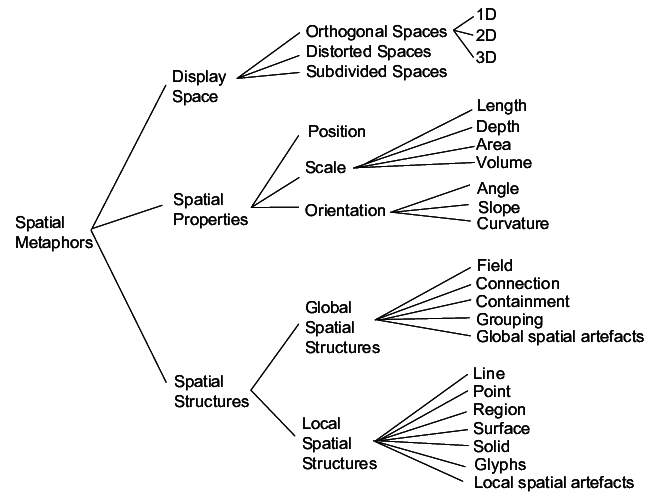
Source: Using Guidelines to assist in the Visualisation Design Process
Think about orientational metaphors, which George Lakoff mentions in “Metaphors We Live By”:
“…up-down, in-out, front-back, on-off, deep-shallow, central-peripheral. These spatial orientations arise from the fact that we have bodies of the sort we have and that they function as they do in our physical environment. Orientational metaphors give a concept a spatial orientation.”
And our time perception is inherently spatial:
“We speak in a linear order; in a sentence, we say some words earlier and others later. Since speaking is correlated with time and time is metaphorically conceptualized in terms of space, it is natural for us to conceptualize language metaphorically in terms of space.”
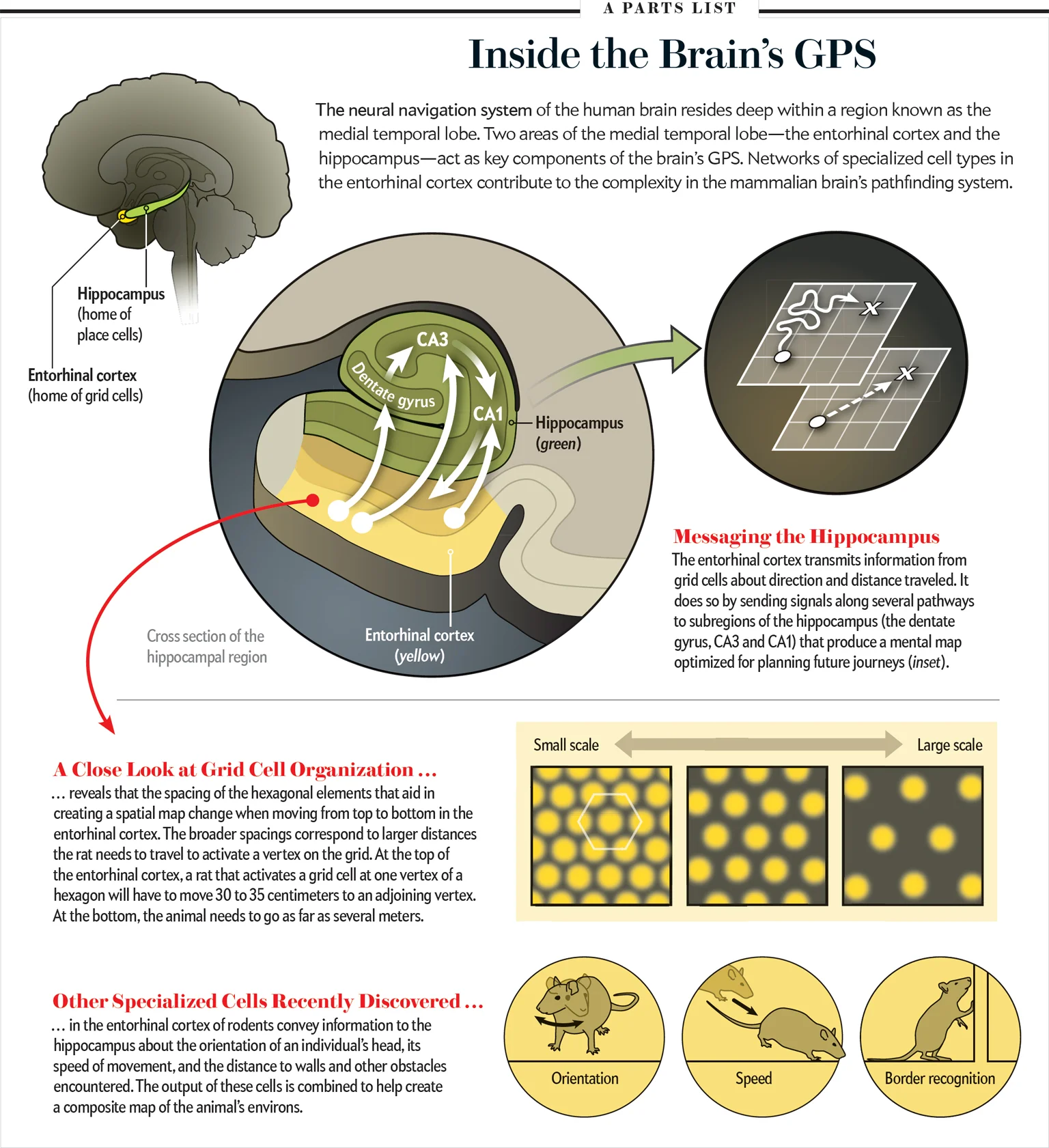
Source: Scientific American
Recent advances in neurosciences indicate that place and grid cells of the hippocampal-entorhinal region, which is considered a spatial navigation hub of the brain, can encode positions along dimensions of experience beyond Euclidean space for navigation.
“Place” cells in the hippocampus restrict their activity (usually) to a single location in space. “Grid” cells in the medial entorhinal cortex fire at multiple place fields equally placed on a triangular grid and can represent vector relationships and distances between different spatial locations. Equally remarkable are the ones that encode the vector relationships to borders, objects, rewards, goals, current head direction, and even the locations of other agents on the map
Space
How can you feel the same emotion as the others, just being in the same place, without saying a word, without eye contact, or even knowing each other’s presence?
3D rendering services allow for the creation of customizable virtual spaces where each parameter can be adjusted to convey any message to any audience:
- Color
- Lighting
- Angles/Perspectives
- Composition
- Contextual elements
Architecture is special because it confines space so we can dwell and create the framework around our lives. The architect works with form and mass just as the sculptor does, and like the painter, he works with color. But alone of the three, his is a functional art. It solves practical problems.
Story
Architectural storytelling is no longer limited to printed materials or static computer renders. Text-to-image generation lets you sketch a storyboard while discussing your initial vision during a strategic session. Ideas can be transformed into rough assets within hours, the client’s feedback can be integrated within days, and iterations are made in weeks, not months.
How much time does it take to build something that will last? You need an idea sparked in mind, words to give it meaning, and an image to give it flesh. Then, you can extend it in space and time, arrange and furnish it, and let others experience it. The dialogue of minds crystallized in virtual spaces. Then come the engineers and builders who reify what once was just an electrical burst of neuronal activity.
FAQ
- What is visual storytelling in real estate and why is it effective?
Visual storytelling in real estate taps into how our brains understand space and remember things. Just like the famous memory techniques of Simonides and Hannibal Lecter, we naturally connect with stories through the environments around us. This is why immersive property narratives are not just effective; they resonate on a neurological level, enhancing emotional engagement and helping buyers remember what they’ve seen.
- How do 3D rendering services support real estate marketing?
When it comes to 3D rendering services, they do so much more than just create basic visuals — they bring entire environments to life. From stunningly realistic scenes and varying weather conditions to dynamic camera flyovers and immersive walkthroughs, these services turn static architecture into vibrant, extended experiences that elevate property presentations and deepen client understanding.
- How does architectural visualization storytelling influence property branding?
Moreover, architectural visualization storytelling, along with modern storytelling techniques in architecture, empowers marketers and developers to communicate complex spatial ideas swiftly. By utilizing text-to-image generation, virtual staging, and contextual composition, they can iterate quickly and craft compelling property marketing narratives that are tailored to resonate with any audience.

